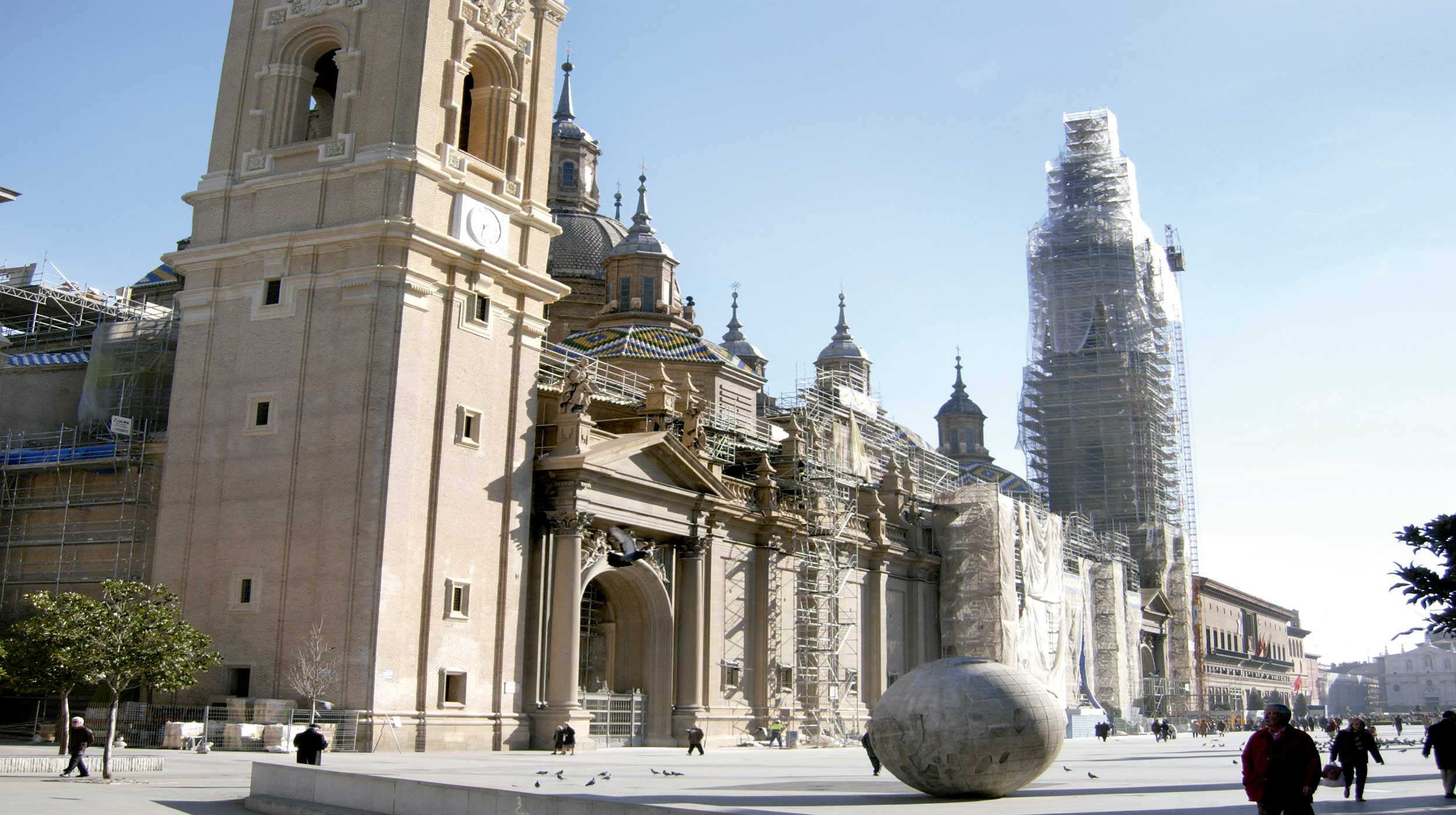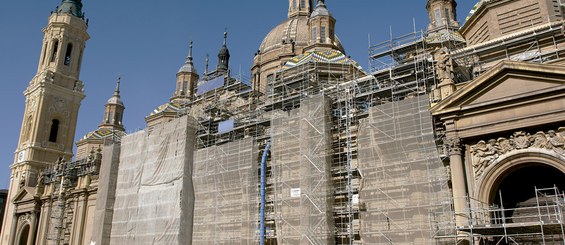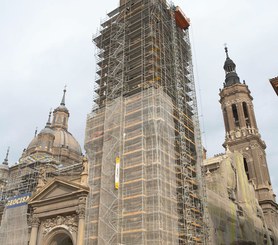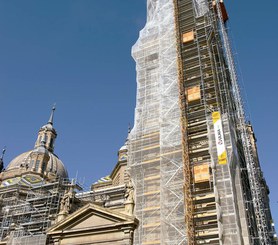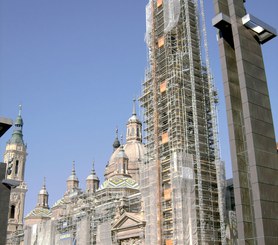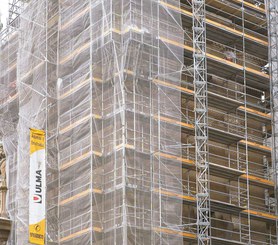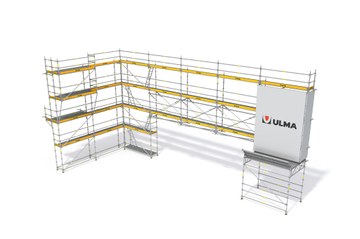Description
The work for the Basilica del Pilar's comprehensive restoration, of medieval origin, has been carried out since 2005. Each year, it receives approximately 10 million visits, which have not been interrupted at any time by this project.
The exterior restoration work of all its façades consisted in the consolidation, cleaning, and replacement of bricks, as well as intervening in the stone baseboards and in the frame moldings of the spans.
ULMA Solution
In the restoration of the lower tower of the Basilica, a BRIO Scaffolding structure with a height of 92 m was assembled, using 0.70 wide ledgers as the structural element. On these, working platforms were established on all the floors, with safety handrails and toe boards for worker safety. Additionally, safety handrails were installed that allowed the assembler to protect the upper level, before accessing it, from the work level. The system has a fully removable ladder that enabled a convenient, fast, and safe vertical communication.
The work on this tower was carried out in 4 phases: the first, up to the cornice at a height of 26 m; the second began from the column head at a height of 63 m, without approximations to the façade, followed by work on the column head itself; and lastly, the improvements to the central part, from 26 m to 63 m. The planning of the work allowed to reduce to a minimum the amount of material necessary for executing the various project phases planned for the long-term.
With BRIO, it was possible to complete all of the required structures, with diverse geometries, in order to carry out the work on: the Basilica roofs, which were waterproofed and the tiles were replaced; the southern façade, cleaning the central area in order to restore the relief of Pablo Serrano and the upper stone sculptures of Santa Engracia, San Velero, San Braulio and Santa Isabel; the dome of Regina Martyrum, where Goya painted between 1780 and 1781, and the 15th century Grand Organ.

